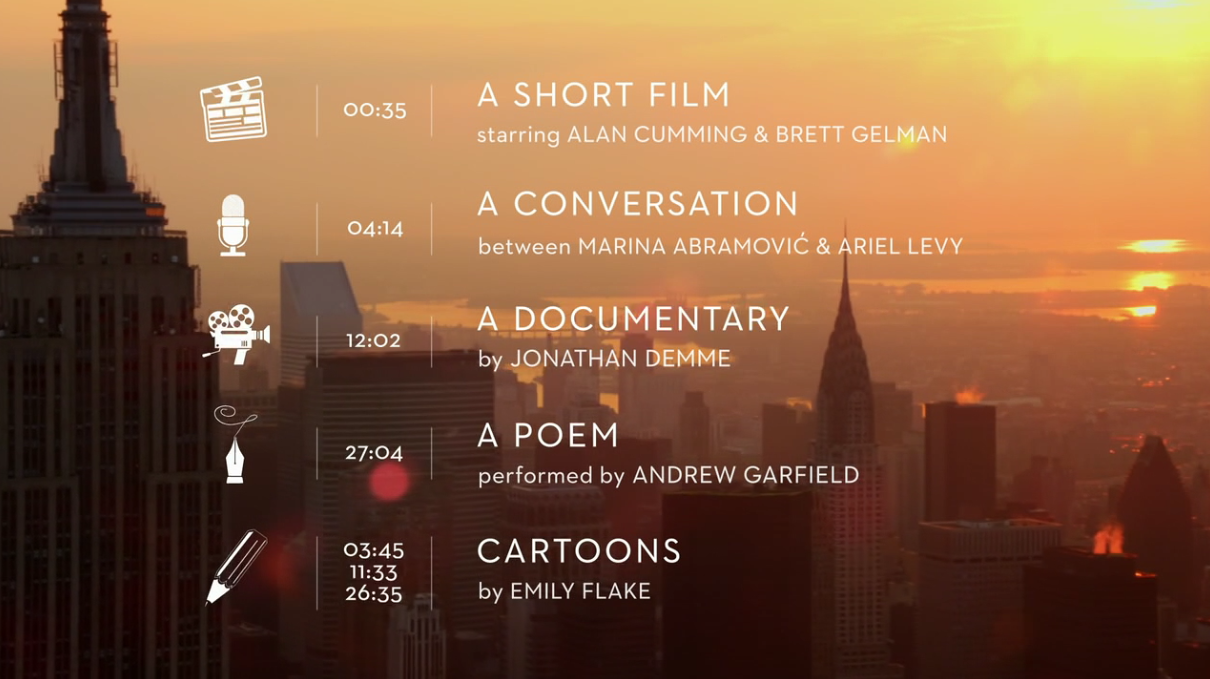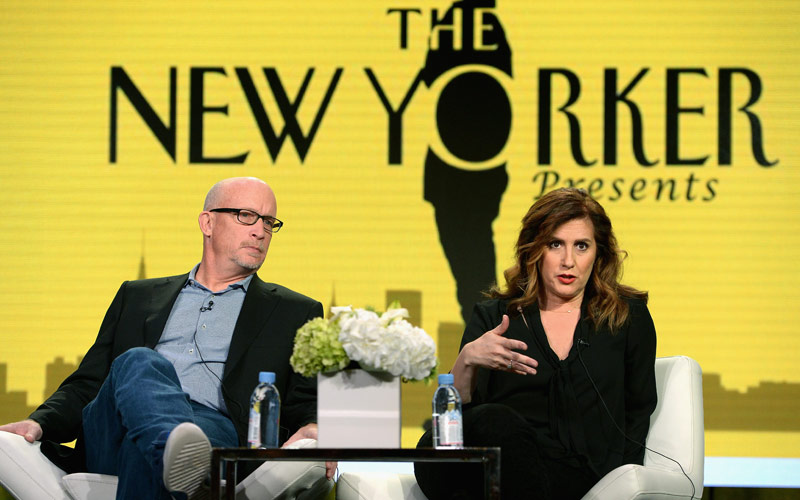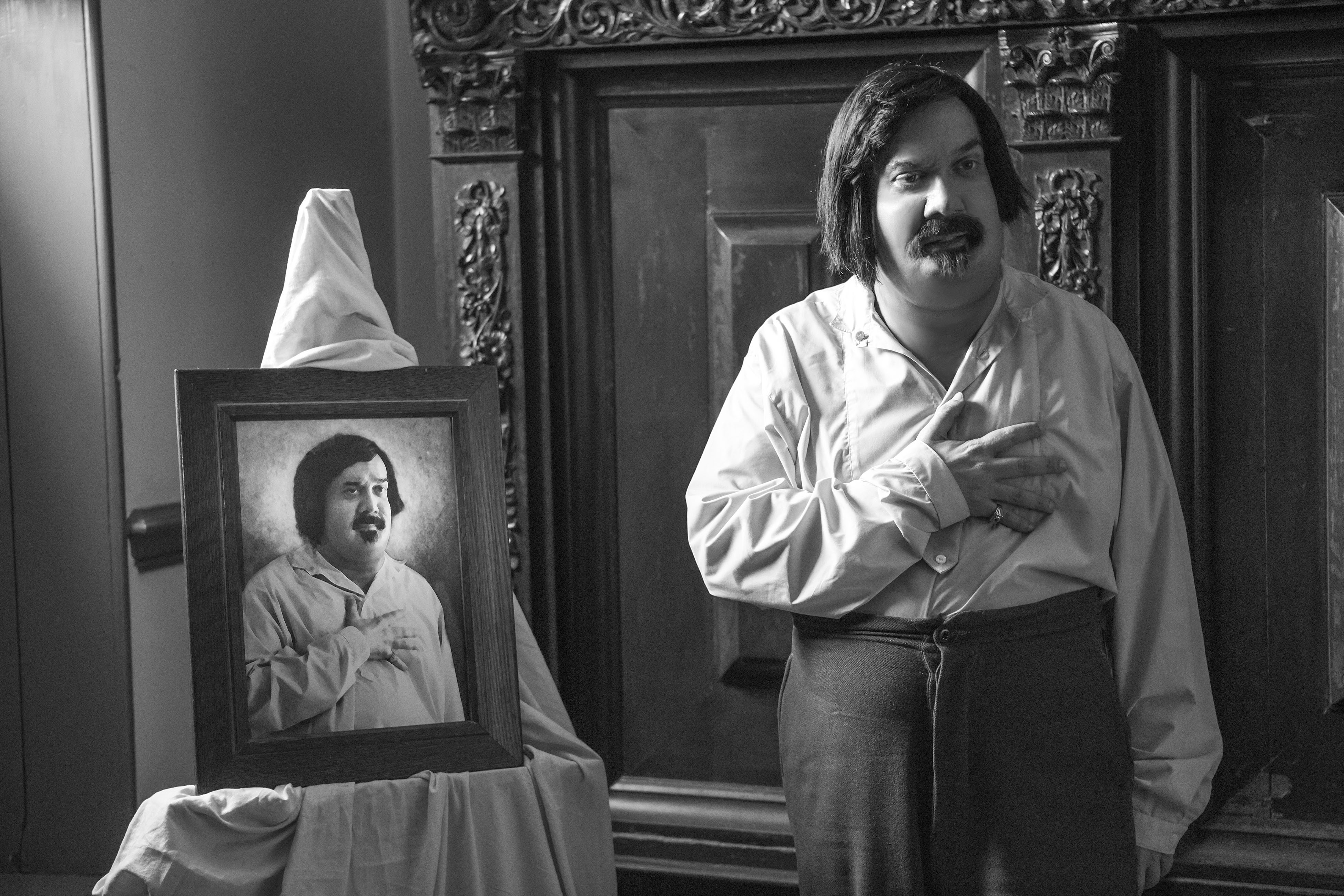Ask the Showrunner: for “The New Yorker Presents,” how did you adapt a beloved magazine into TV?
Amazon’s The New Yorker Presents (2015 - ), which premiered on February 16, is a new experiment for contemporary television: it is a translation of The New Yorker magazine into the medium of visual storytelling. At Sundance 2016, showrunner Kahane Cooperman talked with ScreenPrism about how she envisioned bringing The New Yorker magazine to screen while preserving the style and standard that have inspired passionate fandom among the magazine’s readers over the years.
Re-interpreting any magazine in a visual, dramatic format is a formidable task, given that there are almost no popular models of this kind of revue-style show to imitate. But Cooperman felt confidence that the series would work due to two central elements: talented filmmakers and the high-quality source material of The New Yorker stories. As long as she hired skilled film directors and matched them with writing that spoke to them, the result would be that “we would have these great individual short films.” Meanwhile, she needed to tie these stand-alone short pieces together. “We also had to make sense of an episode and make sure that, as different as they were, nonfiction, fiction, comedy, different writers, different subjects, different filmmakers’ visions, they all had to feel like they were part of the same film. So I put a lot of thought into creating the universe in between all of these pieces that would kind of connect [them]. I felt like it was incredibly important to make each episode, even though it was comprised of so many different parts, feel like a whole.”
Cooperman also had to find a balance between preserving what readers love about the magazine and creating something fresh that wouldn’t merely replicate The New Yorker on a different platform. “We were starting with a level of contact from The New Yorker magazine, and we could take whatever cues we wanted from the magazine in terms of design options,” Cooperman said. Still, “in the end, we weren’t looking to recreate the magazine at all. We were looking to start with the magazine and create something new. I do think it is a new form of a news magazine, but in a visual storytelling… way,” she said.
“What we are trying to maintain from The New Yorker is the quality of storytelling, the integrity of how we’re doing it. Every single one of our pieces is fact-checked by New Yorker fact-checkers, and that’s no small thing. It’s emblematic of the level of focus and intent that we have with every single piece, even if it’s a funnier sort of quirky piece— fact-checked, everything.” But at the same time, they didn’t feel compelled to match a tone or use precise storylines from original articles. “The New Yorker is our jumping-off point,” she said. “We are not looking to recreate the magazine as a whole… What we have here is an opportunity for these filmmakers to take a part of each story, or something in that story or the idea of it or the essence of it, and then do their own thing with it. This is all about filmmakers’ visions and doing their own thing with it, not just sort of mirroring what’s exactly in the magazine. If anything, it’s a very elegant magazine, and we want the show to feel that way, graphically and stuff. But we’re not looking to just be a reflection of it.”

Still from The New Yorker Presents (2015 - )
In defining the show’s format, Cooperman had almost no direct role models in modern television. “There’s really nothing quite like it,” she said. “It’s a very unusual show. The closest thing it might be to is a magazine show, but it’s even not like that because it combines… it’s not just news stories — it’s journalism, it’s fiction, it’s comedy, poetry and cartoons. There’s also glimpses of the world in which the magazine lives in and that we all live in as citizens of the world, who are maybe curious about what’s going on behind a window or a door in our little interstitials. So there’s not really a format; we sort of had to make it up. The seeds for it were in the pilot, for sure. So I give a lot of credit there.”
Amazon made a pilot of the show last year and, following its practice of testing pilots based on reactions from Prime customers, commissioned a full season after the first episode was a hit. Cooperman came on after the pilot, which was shot while she was still serving as co-executive producer of The Daily Show with Jon Stewart (1996-2015). She had the benefit of viewing the show chosen by Amazon audiences, which “I frankly saw as a great place to start. I saw the potential of what could be in that pilot.” She explained the show’s inception: “Conde Nast Entertainment is the publisher of The New Yorker, and I think The New Yorker was open to this idea, and Conde Nast pitched it to Amazon. Amazon bit, I think, really quickly because The New Yorker has such an incredible reputation for high standards — high-quality, curious, amazing stuff. So Amazon came on, and they approached Jigsaw, which is Alex Gibney’s company, which also has an incredible reputation for integrity, and I think when David Remnick heard that Alex Gibney was interested he became very comfortable… Suddenly it was happening.”
Meanwhile, Cooperman was at The Daily Show “where I’d been for many, many years,” but Gibney knew that her background “was also grounded in documentary, so I had this unusual, hybrid resume. The timing worked out that the night after Jon Stewart announced on the air that he was leaving, Alex got in touch with me, along with Dave Snyder who was another producer at his company at the time, and said they didn’t know what that meant for me but that they had this rather extraordinary opportunity and were very interested in talking about it. I had been frankly dying to go back to storytelling. Documentary is where my background is. This would be all different kinds of storytelling, which was incredibly exciting to me. So I met with them, I went through four rounds of interviews. The last one was David Remnick, editor of The New Yorker. I got the dream job of a lifetime, after I thought I already had the dream job of a lifetime. So we got going. And I built a machine that was capable of creating a huge amount of high-quality short films in a short period of time.”

Kahane Cooperman, right, and executive producer Alex Gibney, at TCA in January. (Photo by Charley Gallay/Getty Images for Amazon Studios)
One of the most involving parts of the adaptation was selecting which stories to bring to screen. “The curation process began even before I came on board,” Cooperman said. “There were tons of people reading and reading and reading. Not every story translates into a visual medium. Sometimes it’s just logistics get in the way, and you just can’t do it. You also want to have a balance of topics and types of stories that you’re doing. So it’s like a jigsaw puzzle. David Remnick made suggestions. People were pitching in their favorite things that they have read in The New Yorker. We were all reading away, especially at the beginning. Our supervising producer, Jack Lechner, who, he’s like, encyclopedic about The New Yorker, he like practically knew off the top of his head a ton of interesting articles that we [would] take a look at and then decide. So together we all just came up with this curated list. We winnowed it down and created a menu of stories that filmmakers could look at and choose from. For the most part, that’s how filmmakers and stories got matched up. In addition to our outside filmmakers like Steve [James, Shari Springer Berman and Robert Pulcini], we have four in-house teams of filmmakers creating some of the shorter content that you see in each episode. We also let them choose because you want people to make films about things that resonate for them on a really personal level because it will show in the film and in the storytelling.”

Paul Giamatti in “Le Café de Balzac.” Written by Brendan O’Hare; directed by Shari Springer Berman & Robert Pulcini. Photo Credit: Amazon Studios
For Cooperman, allowing the filmmakers space to express their vision in each short piece stayed true to the magazine’s respect for each writer’s personal voice. And commissioning top directors to helm one-off short works with a large degree of creative freedom is an approach that challenges expectations of how most television or film is currently made. In addition to its experimental, magazine-as-television format and the creative exercise of adapting the elegant publication into a fresh medium, the project has potential to bring The New Yorker’s trademark nuance and sophisticated level thought to new, perhaps younger, audiences. “I definitely think there is an appeal to a lot of these pieces,” Cooperman said. “Not that there isn’t in the magazine because I think there is, but I can speak to the show, that there’s a lot of stuff that would appeal to a really wide range of people and ages, across the board.”
For Cooperman and the team of filmmakers, this is only the beginning. “We already have a season two list, of stories and filmmakers, going,” Cooperman said. “Everyone who worked on it, it was this magical, great experience, which sounds cliché[d] — it’s like what everyone says after they make a film or something, like, It was so amazing — but it kind of was. But everyone’s already, fingers crossed for a Season Two, so everyone’s already thinking towards, what could it be?”
If The New Yorker Presents connects with its audience, it will be interesting to see whether more television will adopt revue or magazine-style curation of short works. Given that platforms like Netflix and Amazon can bring shorts in a convenient way to a wider viewership, our expectations of the standard format for small-screen viewing may soon be forced to change.
Cover Image Credit: Getty Images, Randy Shropshire

